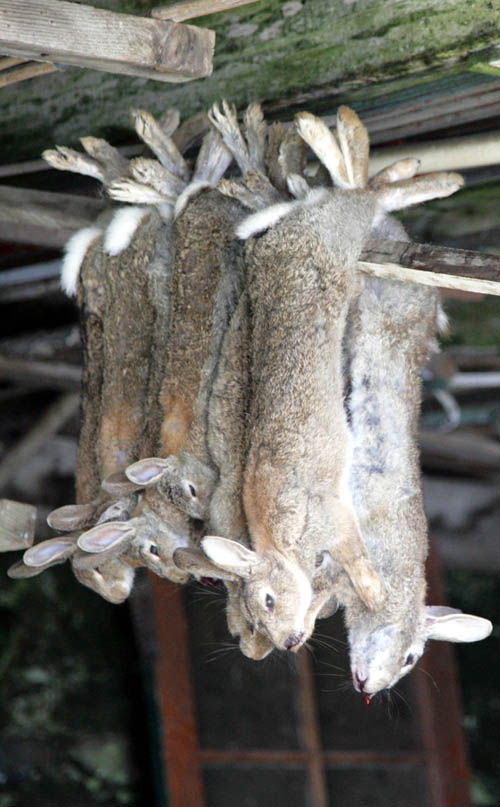MARKSMEN slaughtered 9,000 rabbits on a tiny Scottish island and sold carcasses at £1 a time to restaurants in France.
The cull on Canna was ordered after rabbit numbers exploded out of control and the bunnies’ burrowing and eating habits caused serious damage.
A team of six men spent a “manic” three months on the Hebridean island killing the rabbits using methods including traps, dogs, ferrets, shotguns and rifles.

The bunnies’ bodies were stuffed in a refrigerated van 1,500 at a time and transported more than 1,000 miles to the dining tables of France and elsewhere on the continent.
Despite the slaughter, 10 months after the cull started an estimated 7,000 bunnies remain and a solitary marksman is still on the island picking off survivors.
The cull was ordered by the National Trust for Scotland (NTS) after a previous £600,000 cull of rats allowed rabbit numbers to go out of control.
Edward Cook from Hampshire-based Evergreen Rabbit Control won the contract to take back the island from the bunnies.
“It was one of the biggest rabbit culls in UK history,” he said. “They had done quite a bit of damage.
“It’s made a massive difference. The island looks green again.”
Mr Cook and his team spent three months on the tiny Hebridean island with state of the art night vision goggles and thermal imaging gear so they could hunt day and night.
Pictures on his website, which NTS refuse to release, show a marksman standing over a pile of culled rabbits and holding a scoped rifle fitted with a sound suppressor.
Mr Cook revealed that the Canna rabbits behaved unexpectedly during the cull.
He said: “The ones on the islands have evolved differently. They show no fear of ferrets. They didn’t bolt.
“Traditionally the ferret chases them from the holes into nets. But they were not scared of ferrets to a degree.”
He continued: “It’s Canna. It’s not quite as straightforward as other places.
“Hectic is a polite way of putting it. It was manic.
“There was all the logistical problems of being on the island. If the weather turned rough there were problems getting on and off the island and the rabbits didn’t come out.”
He added: “We used traps, rifles, shotguns, dogs, everything. The only thing we didn’t use up there was birds of prey.”
Instead of burying the carcasses on the island all the rabbits were taken away and sold for “£1 a rabbit”.
Mr Cook said: “Every single rabbit was used. All 9,000.
“Once a week we would bring them down in a refrigerated van. In the first week we had 1,500 in a van.”
Mr Cook added: “Personally I wouldn’t get involved in the job were the rabbits not used. I would want to make sure they are used.”
Colin Irvine, proprietor of the Tighard Guest House on Canna, agreed the rabbit infestation on the island had got out of control and even caused a landslide.
“It was pretty bad. You could see the hills moving,” he said. “They were eating everything in sight.
“The company who organised the cull took the rabbits] to France. It’s better than being buried.”
A spokeswoman for the NTS claim the cull had cost somewhere between £5,000 and £10,000 so far.
“One of the things with rabbit control is that it is on an ongoing basis,” she said.
“This was done for conservation reasons because of Canna’s special habitat.”